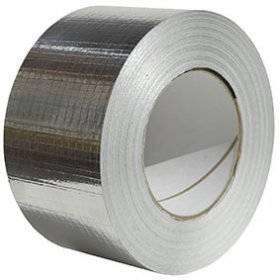If we could consume uranium, you could have a teaspoon’s worth and be done with eating for the rest of your life.
I think that’s technically true regardless.
I wonder if that’s actually factual or not. Uranium by itself isn’t too terribly dangerous. It’s the whole fission byproducts thing that’s the buzz kill.
You would get heavy metal poisoning, same as if you ate a chunk of lead

Interestingly, no. It’s not the same as if you ate a chunk of lead.
Lead binds to calcium channels, and then blocks them. This makes it a bit of a neurotoxin. It also accumulates in the bones.
Uranium on the other hand is one of the heavy metals that the body is good a filtering out of the blood. The body is not as good at expelling the uranium. It accumulates in the kidney. This can lead to kidney disease, and other related issues. And that’s just the chemical toxicity of Uranium. Add in the radioactive side of things, and you have a truly distinct form of metal poisoning.
Also it depends on the isotope of uranium. Something you could find naturally isn’t too dangerous, but something enriched too be used as fuel or for wepons is significantly more radioactive.
Radioactivity inside your body is very bad bad
AM or FM?
5G
Lies that Big Non-Irradiated food is trying to spread. Uranium is actually nummy. Why do you think it’s called “Yellow Cake” anyway?
I have a uranium rock which I could conceivably swallow - probably closer to a tablespoon than a teaspoon. I don’t think any process in my body could extract energy from it.
Alpha radiation is not too bad. Unshielded helium particles. Like I tell anyone I show my rock too - as long as you don’t eat it, this is safe. (I am a mad scientist who has exposed hundreds if not thousands of children to uranium lol)
Really, if you could extract the energy from the nucleus of a hydrogen atom, you’d never have to eat again. But also because that’s too much energy for you and you would be dead.
Copy pasta without source. Book! https://xkcd.com/1162/
*Boo
(But having a book instead is always nice.)
I choose to believe it was meant as a warning, because GP is going to yeet a book at your head. But with a fair warning.
Maybe it’s like a yellow card and they’ve been booked.
I always use “book” as an insult. Especially since my phone autocorrect was updated…
I love book.
which is bigger? TREE(3) vs
((…(1 room of stacked papers ) room of paper) room of paper)…)) room of paper
The number of brackets in above expression is, eh, ok, you got the idea.
/s
Uranium generates that energy by fission. The hydrogen in sugar could generate huge amounts of energy if fused.
And this boulder could generate huge amounts of energy if I pushed it up to the top of Mt. Kilimanjaro and let it roll down.
44 upvotes and 0 downvotes for a comment that doesn’t understand that energy density measurements like this tend to measure the useful energy of a system.
It’s disappointing that natural selection didn’t figure out fusion.
It figured out photosynthesis instead. Why do your own fusion when you can just take advantage of the fusion that’s already happening?
There is still time
I mean, technically it already has.
It’s good it didn’t, otherwise it’s possible that all the hydrogen in the ocean would be fused into helium by now
Well, more likely it would significantly heat up earth due to the amount of energy released first, cooking everything/starting an endless cooking->extinction->cooling cycle
On the fusion planet: “Man, can you imagine if early life figured out how to make poisonous oxygen gas?”
*in a silly high voice due to all the helium
We have fusion (hydrogen) bombs. We just haven’t figured out how to maintain and efficiently harness it for energy.
How much more energy would you get if you fused uranium?
Using the rule of thumb, anything heavier than iron requires energy input to fuse. So you lose energy fusing uranium.
Serious answer: A huge negative amount. Anything above iron requires energy to fuse (which is why it produces energy from fission.) and I’m pretty sure nothing with 184 protons could be stable enough to count as being produced - the nuclei would be more smashed apart than merging at that point.
Ask Hiroshima and Nagasaki.
In alphabetical order.
Edit: oops, those are fission, my bad
Those are fission. Fusion bombs don’t fuse uranium. They use a fission bomb to fuse Lithium.
Fusion bombs use a fission bomb to fuse Hydrogen, which is why they’re called H-bombs.
Look at all these nuclear scientists on Lemmy.
I mean if we really want to be technically accurate here, the lithium is just a moderater for the hydrogen isotopes to fuse.
But for me it gets fuzzy when looking at the reaction.
LiD is 4 protons, 8 neutrons. Add a new neutron, and bam, you have 4 protons and 9 neutrons. But that’s where it gets weird to me. The lithium needs to decay or something into a tritium and dueterium which forces the tritium to fuse with the existing dueterium in the LiD molecule? Clearly the neutron has enough energy to transfer into one of the atoms to increase the chance of tunneling actually occuring.
The only real purpose of the lithium deuteride is that it’s a dry, shelf-stable, room-temperature fuel. The very first hydrogen “bomb” (actually a building-sized device) used supercooled liquid hydrogen as the fusion fuel, but this was obviously not practical for a deliverable bomb.
How about a nice game of Global Thermonuclear War?
For that matter, even the Nagasaki bomb (“Fat Man”) didn’t use Uranium at all - its fuel was Plutonium.
Oh, they do, but not as the primary or secondary. You can wrap depleated uranium around the core to capture fast neutrons that are leftover from the rest of the process. Changing the number of layers is how you can dial in a desired yield.
Damnit, you’re right and I’m wrong!
That’s fissed, not fused.
I stand corrected, because I done forgetted.
and all would generate the same if thrown to something capable of lossless e=mc^2 conversion (maybe a black hole)
sadly black holes go to something like 42% conversion (source: some minute physics video i think)
That’s quite interesting. Is it because of the light produced when the materia starts spinning around in the accretion disk in very high speeds? I doubt hawking radiation would do anywhere near that much
No, It is actually the light produced that we can actually use as a energy source, the limiting thing is, before completely loosing its kinetic energy to frictional heat, stuff falls into black hole, from where we can not get anymore energy back. If black hole is stationary, then its 6%, and if its spinning (and assuming the fastest spinning theoretically possible) - 42% (spinning black holes are smaller and have smaller radius of no-return
Ahhh alright I was thinking the black hole converting mass to energy for itself, not as if we were to try utilize it
we can’t let the noble black hole keep all ye energy, ye shall liberate it
Whilst I get your point, their point is still valid in the sense that you just can’t extract that energy from gasoline in a more efficient manner than just burning it. For practical purposes, gasoline truly is that much less energy dense.
For comparison:
- Chemical combustion of uranium: ~4.7 MJ/kg
- Nuclear fission of uranium-235: ~83.14 TJ/kg (or $ 83.14 \times 10^6 , \text{MJ/kg} $)
Do you have a Lemmy client that supports mathematical functions?
Built-in LaTeX support would be so cool (and not that hard, Mathstodon has it)
With ollama, having smart local bots for your lemmy instance should be easy
Did you reply to the wrong comment?
In theory, yes. In practice, of those two only fission is currently viable.
If you can do nuclear fusion yea, it’s more efficient. Cold fusion has been a sci Fi thing for a while; they mostly moved on to antimatter-matter annihilation, and ZPE(seems to be a favorite for sg1)
Wrong. You can’t scale logs much. logs are 16 MJ/kg
Bah, that graph needs antimatter.
Is there enough paper on earth?
Antimatter doesn’t really do anything by it’s own, but if we let 1 kg react with 1 kg of matter (non-anti-matter), we get E = mc2 with m = 2 kg. So 1.8 * 1017 J, or 1.8 * 1011 MJ. If we assume that 10 MJ/kg is represented by about 1 cm, the bar would have to be 1.8 * 1010 cm or about 1.8 * 108 m. A standard A4 piece of paper is about 30 cm tall, so 6.0 * 108 A4 papers are needed. I.e. 600 million papers.
So we definitely have enough paper, but it would be a very tall stack.
That’s only about 180,000km (~112,000 miles) or just under half way to the moon.
Also some quick googling says an average desktop printer can print about 30,000 pages per month, so it would take 20,000 months (~1670 years) to print that out. And a typical toner cartridge can print 3,000 pages and costs $80, so it would take 200,000 toner cartridges and cost $16 million.
Now, those aren’t based on any specific model, just the first result in Google haha
Incorrect, if you aren’t a bitch about it. Fuse that gasoline!
I was thinking the same thing. It’s unfair compare chemical energy to nuclear energy. Coal still kind of sucks, but the hydrogen in the others could definitely be used in fusion…
It is perfectly fair in the context of “fuel”, a resource used to produce energy. Whether energy is generated via chemical or nuclear reaction is irrelavent in this case.
Yup. If, for example, you’re designing a deep space mission, where every gram counts, there’s a conversation to be had about whether it’s cost effective (and appropriate risk) to send nuclear reactors and fuel aboard those spacecraft.
Or using modern engineering, whether an aircraft carrier should be powered by nuclear fission or internal combustion of hydrocarbons.
Usually space craft have relatively light power needs so why bother with a whole-ass nuclear reactor when an RTG is smaller, lighter, and has no moving parts? They’re a pretty common choice for space probes, for example.
We’re actually running into shortages of Plutonium 238. Which is seriously compromising deep space missions.
Coal still has carbon in it. Carbon does have a lot of excess energy per nucleus. Just gotta turn it into iron.
That’s true, but there is far more energy to gain by fusing hydrogen compared to carbon. I’m not sure how it compares to uranium though. I suspect it might be similar. (I mean, obviously in practice you wouldn’t / couldn’t actually get the energy from fusing carbon - but we can still compare hypothetically. … also, I’m sure we could get a clear answer by looking it up; but this is one of those things where thinking about it is probably more interesting than knowing the answer.)
Carbon and uranium are pretty comparable. Look up binding energy per nucleon.
If we’re counting future technology, my money are on iron man style reactor. Don’t need to fuze shit, infinite energy.
Except the Ironman style reactor is pure science fiction, whereas hydrogen fusion is real, but still has issues of energy capture, which several groups are working on.
There are two promising avenues, one is a direct physical capture, as in fusion is initiated with huge pistons that are physically moved by the fusion explosion,
And the other cool one is direct magnetic coupling.
I expect both to take off long before the tokamak style does.
But fission power is already here, and much easier to set up. Molten Salt Thorium is also promising. And once some corrosion issues are solved, could power the earth at current levels for the next thousand years.
All while producing an isotope of actinium that produces only alpha radiation. Which is super useful in killing cancer cells.
Well, they suggested fuzing gazoline, not me.
But fission power is already here
Asterisk. A big one. There is no real life prototypes of energy-positive reactors yet. There are several promising pre-prototypes that are almost ready, just need to fix some engineering issues. And it would not be a problem if the whole field wasn’t in this state since the sixtieth.
Fission. As in uranium and Thorium.
We’ve had energy positive fission since the 1950s.
Weird thing I’ve noticed:
Logs are taught in high school. Absolutely no one seems to remember what they are after the unit test, much less high school. I’ve even reminded other math instructors about how to use them.
Why do people have such a hard time learning to use and understand logs?
I love this comic, and it’s going to replace my weird “let’s talk about how this makes the distance between us and Alpha Centauri, and us and Earendil easier to understand” bit.
I mean I think a lot of it is that at least in America when it comes to Math a lot of the teaching is more about how to use specific formulas and apply them to certain kinds of problems. They don’t really teach you what it is you’re actually doing or why you’re doing it. It just turns into recognizing a type of problem and applying a certain tool to it rather than understanding what that tool is and what it does.
Yes boss, I did work out the dynamic range of that log amplifier we wanted to use in our next product’s sensor PCB, it’s 80dB.
The results are over here. (points to a roll of A-4 paper)
It has 40 data points and only took me 1 week, 10 pencils, and 20 erasers to plot the chart. Yeah I can present it, it’ll take me 10 minutes to roll it out, pin it down, and fetch the A-frame ladder.
This is the real big brain hack with decibels — you can use a linear scale, it’s just that the units are logarithmic instead.
(Yes I know most people would call a dB axis logarithmic, it’s just a silly comment.)
You call this a linear holograph of a non linear phenomenon and earn yourself that promotion.
In recent developments, 10% of the US GDP is now allocated to producing Astronomy and Astrophysics plots. More news at 9.
Jerry Hathaway still wants 5 megawatts by mid-May.
You win the Internet today!!!
Holy crap, my only ambition was lovely parting gifts!
Log scales are great but cannot be understood by the vast majority of people. They simply aren’t taught to a level of comprehension.
would burning fat be carbon neutral?
In the same way biofuels are: Technically yes, but still not that great of an idea outside special applications. (One I could imagine would be someone wanting to live completely off grid using filtered frying oil in an old-but-ridiculously-sturdy diesel generator)
Wonder what that would look like the even more extreme case of matter-anti-matter?
By the way, energy density is exactly what you look for in bombs. It says nothing about energy prices per joule. It’s also great for nuclear submarines or nuclear powered aircraft carriers. So war, basically. Light from the sun has a pretty low energy density, yet powers live on earth.
The energy density of light from the sun is pretty insane. You can power a lot with 1kg of light
Yep, radiation pressure. Which is a limiting factor for star size too: too big and the radiation pressure gets stronger than the gravity, blows them appart.
log to the base 76000000
deleted by creator


















